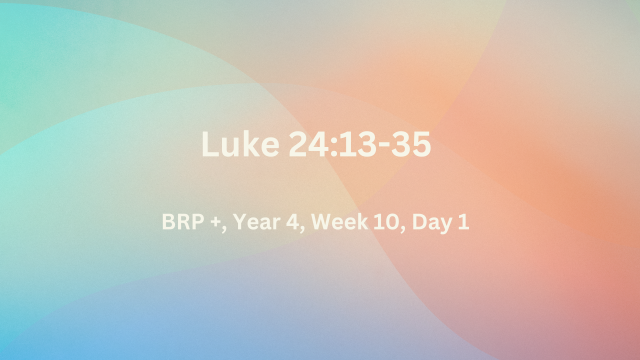Luke 24:13-35
Q.1. What did the Emmaus disciples relate to Jesus about the events at Jerusalem? In what way did Jesus provide a fuller explanation? – (Lk.24:13-27)
The journey from Jerusalem to Emmaus was an eleven kilometres trek (Lk.24:13). The two disciples who were probably Cleopas and his wife (Lk.24:18) lived near Emmaus. While they were grieving over the death of Jesus, Jesus actually joined them on the journey, and didn’t reveal that He knew about the shattering events that they had witnessed (Lk.24:14-19). They shared about His impact on the masses, and how their dreams were shattered, when His life was cut short so horribly at the hands of the religious leaders (Lk.24:19-21). In spite of the report by the women, that the angels had declared that Jesus was alive, the story was impossible to believe, since He had been so brutally crucified (Lk.24:22-24). Jesus then proceeded to remind them of the message of the Old Testament Scriptures – 25 … O foolish men and slow of heart to believe in all that the prophets have spoken! 26 Was it not necessary for the Christ to suffer these things and to enter into His glory?” 27 Then beginning with Moses and with all the prophets, He explained to them the things concerning Himself in all the Scriptures (Lk.24:25-27). Jesus could have just taken the veil from their eyes and revealed Himself to them. Why didn’t He do that? Because future generations had to trust in the truth of the Scriptures – for we walk by faith, not by sight (2 Cor.5:7). Jesus then detailed to them the way He had fulfilled the prophecies of the Bible concerning Himself.
Q.2. How did the disciples from Emmaus conclude that they had met the risen Christ? – (Lk.24:28-32)
In verse 16, Luke recorded that – their eyes were prevented from recognizing Him, but here he reported – then their eyes were opened and they recognized Him (Lk.24:31). The resurrection was totally unexpected, and Jesus was dressed in a way in which He was not easily identifiable. Yet two things stand out: Their eyes were opened as He broke bread (Lk.24:35). Perhaps they saw His nailed pierced hands, although that is not recorded (Jn.20:20, 27). There was also the way Christ handled the Scriptures that convinced them that – the Lord has really risen (Lk.24:34).
Q.3. What convinced the disciples that they had met Jesus and what did they do with the information? – (Lk.24:32-35)
After Jesus had vanished from their sight, they said to each other – … “Were not our hearts burning within us while He was speaking to us on the road, while He was explaining the Scriptures to us?” (Lk.24:32). The way people break Bread and open the Bible is still a convincing proof of real faith … or the absence of it. They were so convinced about the identity of this Stranger, that they immediately turned back to share the Good News with the Eleven and their companions (Lk.24:33).
Q.4. How did Luke reveal that these disciples were intimate friends of Jesus? – (Lk.24:22-27, 30-32, 34-35)
These Emmaus disciples were intimately acquainted with the ministry of Jesus, and the happenings surrounding His death (Lk.24:18-21). They knew details of the report from the women about their encounter with the angels (Lk.24:22-24). They were familiar with the practice of Breaking Bread and had heard the news of Peter’s exposure to the empty tomb (Lk.24:28-30). Jesus used a couple who were outside the immediate inner circle, to corroborate the resurrection sightings.

